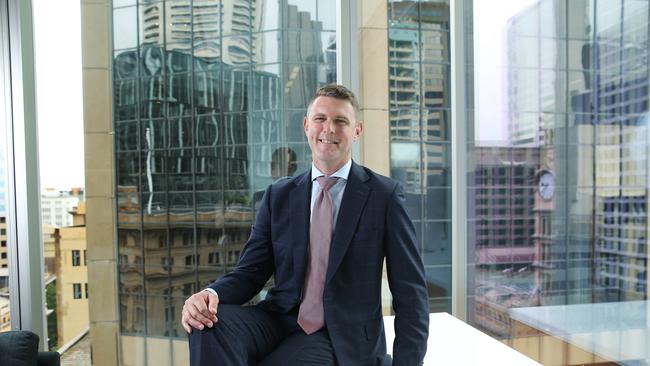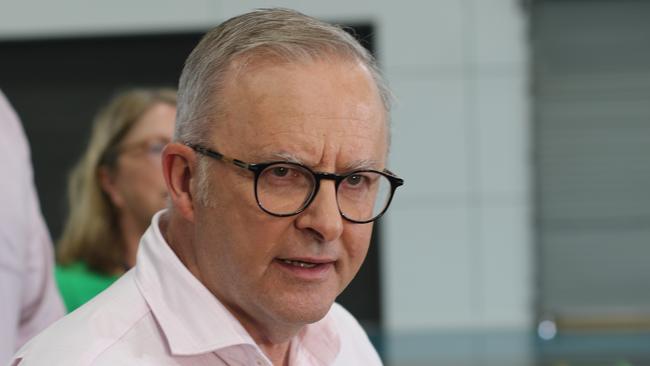Growth in insolvencies unlikely to slow in 2025: McGrathNicol chair Jason Preston
McGrathNicol’s Jason Preston expects more businesses will shut in 2025 even if the RBA cuts interest rates, as poor consumer sentiment, higher power prices and inflation take their toll.

The boss of one of Australia’s largest turnaround firms has warned that a combination of poor consumer sentiment, the energy transition and broader inflationary conditions will inflict further harm on businesses and force more to shut.
McGrathNicol executive chair Jason Preston also said the upcoming federal election would impose more uncertainty on businesses at a challenging time, as executives await to see whether the Albanese government will be re-elected.
While inflation has stabilised in recent months, its lingering effects – compounded by 13 interest rate hikes and the subsequent squeeze on household and business budgets – are keeping consumer and business sentiment weak.
Almost 26,000 businesses have plunged into insolvency since the 2022 federal election – including a record number in November. ASIC data shows that the country has notched a record number of insolvencies in a calendar year, with 12,405 businesses collapsing between January and November 30.
“Insolvency numbers are now relatively high across a range of sectors and are running ahead of pre-Covid levels. I expect that will continue this year, with structural issues across certain sectors, coupled with the broader macro impact of interest rates, input cost inflation and cost of living issues driving up activity,” Mr Preston said.
“The current macro-economic settings are more difficult than what many businesses were facing a few years ago. Even though we’ve been facing this for a little while, it still has some way to go.”
ASIC statistics show that 6925 construction firms, 4012 hospitality businesses, 1706 retailers and 1329 manufacturers have become insolvent since June 2022. A record 1442 businesses hit the wall last month, an increase of 62 per cent compared with November last year and 158 per cent compared with May 2022 levels.
Mr Preston said that barring any surprises he expected current insolvency rates to continue through 2025.
He added that a reduction in interest rates would be a major catalyst in keeping businesses afloat as it not only eased the cost of financing for business, but would fuel more positive sentiment which would spur more spending and investment in the economy.
“What’s driving some of the activity is cost of living, and a lot of pressure has been inflicted on households from 13 interest rate rises and high levels of inflation. That won’t be reversed right away,” he said.
“That’s not going to fix some of the consequences coming out of energy transition, which is not a cyclical change but structural. It also won’t materially change the structural challenges for example with private health right now,” he said. Mr Preston added that those factors would continue to play out regardless of rates. He saw lower rates assisting the residential development market.

Commonwealth Bank forecasts that the Reserve Bank will cut rates from February for a cash rate of 3.35 per cent by the end of the year, while ANZ, Westpac and NAB expect the first rate cut in May.
While constructions continues to make up the lion’s share of insolvency appointments, there has been a doubling in the hospitality businesses closing down compared to a year ago. In 2024, a number of high-profile businesses faced trouble, including Booktopia, Godfreys, Beston Global Food Company and airlines Rex and Bonza.
The energy industry has demanded that the next annual electricity tariffs reflect market conditions and is not influenced by a desire to shelter households and businesses from a cost-of-living crisis. A surge in power bills is expected when energy subsidies end over the coming months.
“Higher energy costs have had a knock-on effect to other sectors, including manufacturing. While energy prices have plateaued, prices remain considerably higher than historical levels, creating ongoing pressure,” Mr Preston said.
A survey of 1024 business owners by MYOB for The Australian found that 54 per cent said higher operating costs and a reduction in consumer spending increased risk of going broke in 2025, compared to 37 per cent which reported no change and 6 per cent which saw a decreased risk.
MYOB chief customer officer Dean Chadwick told The Australian that business owners were feeling the pinch from higher utility bills, rent and wages, which paired with a reluctance by households to spend.
“Small businesses with 5 to 19 employees have felt it the most, with a majority telling us that their business is at risk due to ongoing cost of living pressures,” he said.
“As we enter an election year, we expect business owners to pay close attention to party proposals in response to cost of living challenges, as they set their sights on a positive economic future.”
Mr Preston told The Australian while elections might not affect immediate decisions made by small businesses, they could slow down decision making for larger companies and investors who wanted stability and policy certainty before making any decisions.
“(Elections) in the lead-up and shortly after creates conditions that can discourage activity for a couple of months,” he said.






To join the conversation, please log in. Don't have an account? Register
Join the conversation, you are commenting as Logout